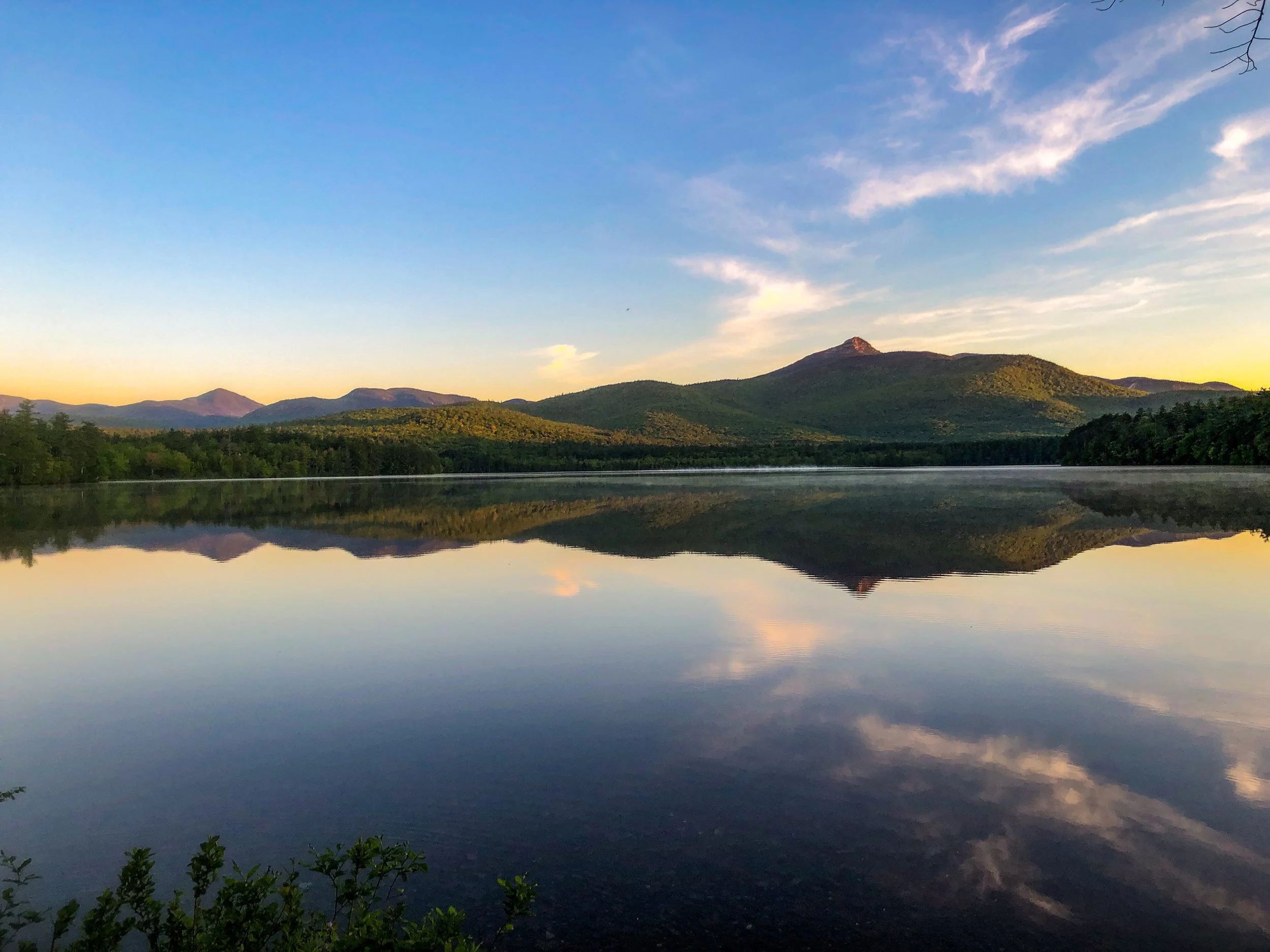Former CLC Stewardship Director Lynne Flaccus monitoring a property and seeing what’s happening in the natural world one February. Photo: Juno Lamb
Yesterday:
In the late 1960s and early 1970s, seventy landowners in the Chocorua Lake Basin signed mutually binding conservation covenants restricting the usage of their land. Between 1968 and 1973, practically all of the land immediately surrounding Chocorua Lake was placed under covenant. The conservation covenants permit only residential use, require a minimum lot size, and control building height and setbacks. The covenants also prohibit billboards, commercial extraction of sand and gravel, alterations to natural drainage, and clear cutting within 150 feet of Chocorua Lake.
Chocorua Lake Conservancy holds these covenants and is responsible for monitoring covenanted properties and enforcing the covenant terms. In total, the Conservancy is responsible for protecting 3,000 acres through 74 conservation covenants and easements on over 102 different properties.
Photo: Juno Lamb
Coincident with the covenant movement, many large parcels of undeveloped land within the Chocorua Lake Basin have been donated by local residents to Chocorua Lake Conservancy or other conservation organizations. Additional lands have been purchased by Chocorua Lake Conservancy, which now owns or manages almost 1,000 acres of conservation land and trails in the Basin.
The covenant initiative was unique within the State of New Hampshire. The Chocorua Lake Basin property owners were the first group of landowners to undertake mutual covenants on such a large scale and on lake frontage. No other major lake in New Hampshire enjoys an entirely protected shoreline, a particularly unusual situation in that a major state highway runs along one side.
The establishment of conservation covenants was exceedingly forward looking and predated the introduction of conservation easements in New Hampshire. In fact, the use of conservation covenants to protect the Chocorua Lake Basin provided the momentum for the easement legislation in New Hampshire. Although the concept of covenants had been in use for years, employing them for scenic purposes was novel. The Chocorua Lake Basin property owners were among the first in New Hampshire to recognize the value of, and subsequently to protect, scenery and a landscape for the benefit of the public, fulfilling a long legacy of stewardship for public enjoyment.
Today:
What is a conservation easement and why grant one?
A conservation easement is a legal agreement that restricts development and potentially other uses on private property. The landowner retains ownership but gives up the right to conduct certain activities on the land. Those rights are then “donated” to a land trust or other qualified recipient.
Landowners interested in a conservation easement on their property often wish to protect their land from development in perpetuity. Whether the land passes to future generations of the same family or to new owners, the restrictions and allowed uses pass with the property. The granting of an easement may have tax benefits for the donor.
Are there potential tax benefits?
The terms of a conservation easement can be flexible depending on the wishes of the landowner and the conservation values to be protected. In order for a donation to qualify for a charitable deduction it must satisfy certain conservation purposes. These might include:
the preservation of land areas for outdoor recreation and/or education for the general public
the protection of relatively natural ecosystem habitats or wildlife
the preservation of open space (including farmland and forestland)
the preservation of historically important land areas and buildings
The value of an easement donation is calculated by an appraisal that looks at the property at its fair market value with and without restrictions. The difference between these two is the value of the easement. Potential easement donors should seek legal advice to help determine whether there are tax benefits in their situation.
The lower value of the property with a conservation easement may also influence estate taxes. Normally fair market value could be used to assess estate taxes rather than current use, resulting in higher taxes for heirs.
With a conservation easement, the restricted value of the property could result in a lower estate tax. For large parcels, including farmland, this may help landowners keep properties within their family or maintain it as working agricultural land. Again, legal advice is recommended when considering how an easement may affect future estate taxes.
Are there property tax benefits?
Assuming a property is taxed at current use (New Hampshire) assessment levels, a property owner would pay the same property tax amounts.
Does an easement allow public access?
Landowners who grant conservation easements in most cases are not required to grant public access. In some cases landowners choose to allow public access, say for a trail easement. Easements that are protecting wetlands, agricultural lands or other unique habitats or wildlife generally are not written for public access. In the case of scenic values, though the property must be visible to the public, access is not required.
Interested in learning more about conservation easements in general? Visit the Land Trust Alliance for more information.
Banner: Kristina Folcik



